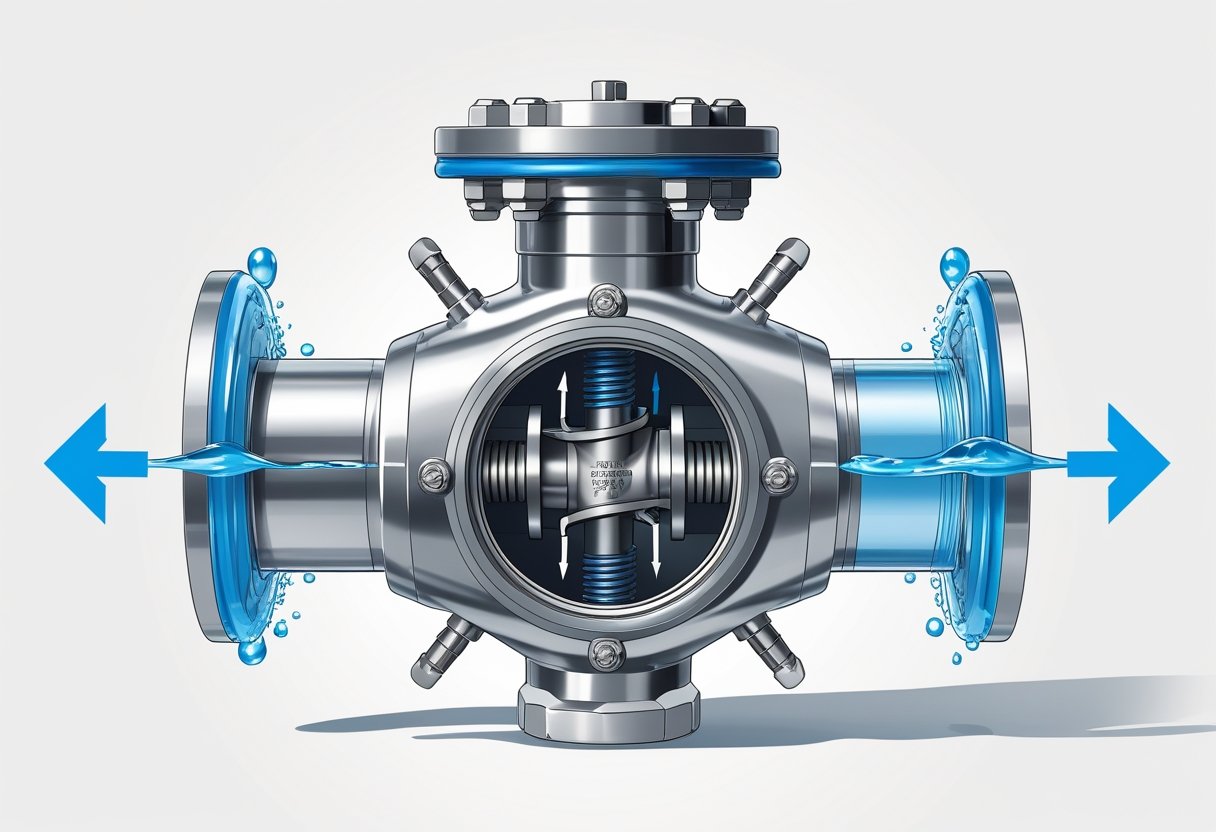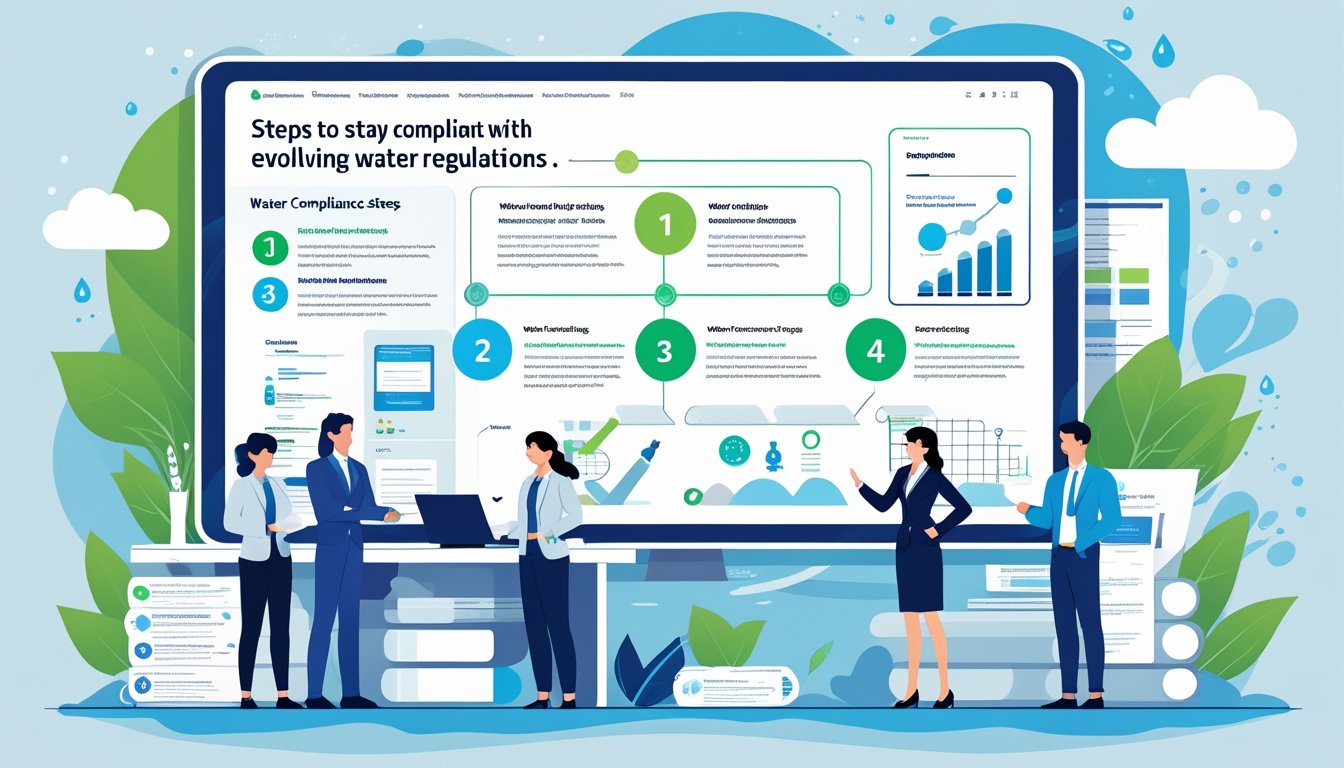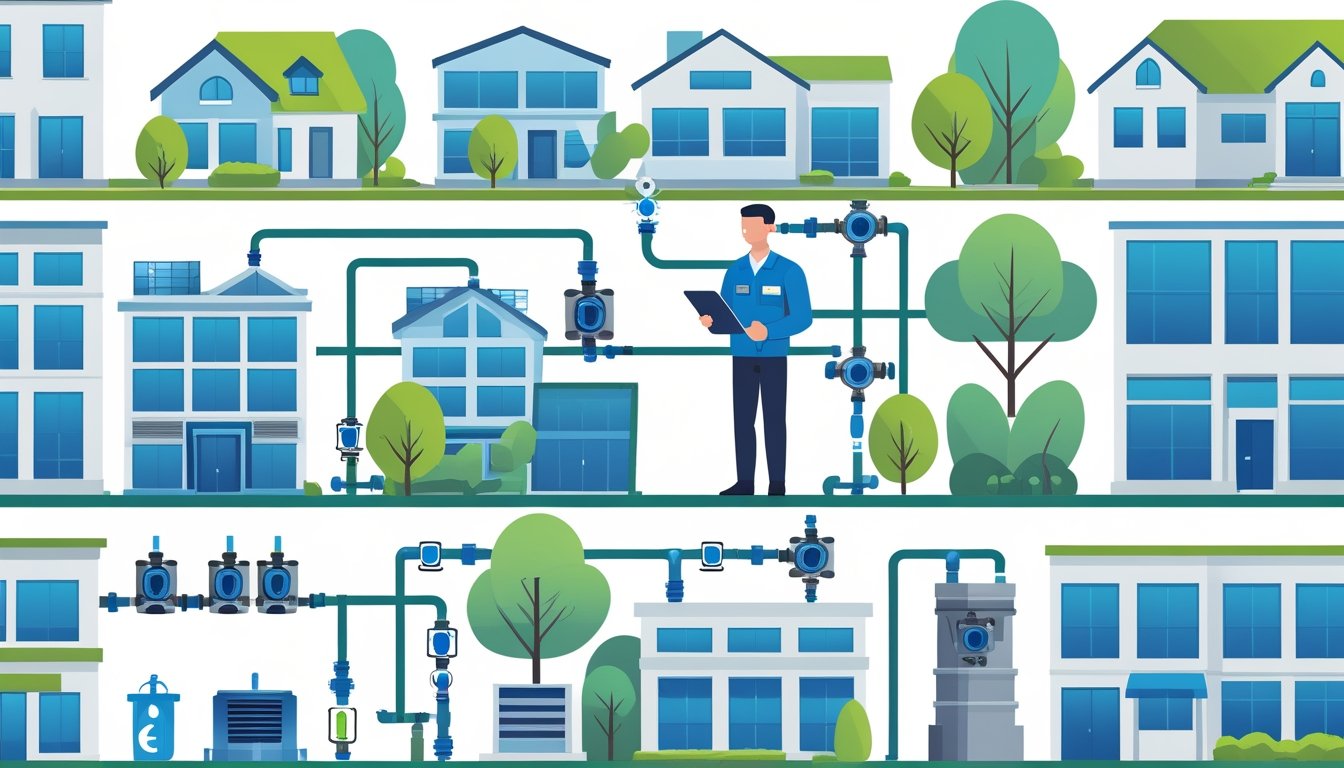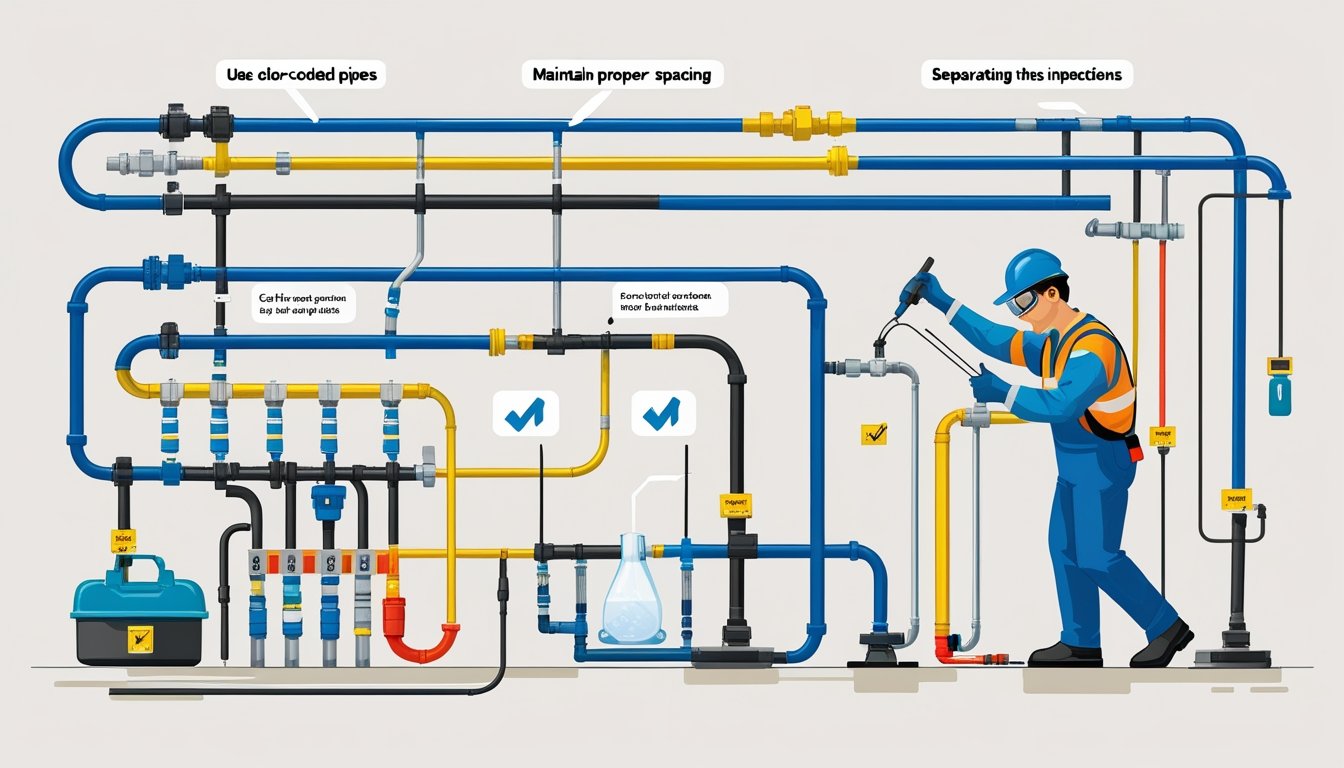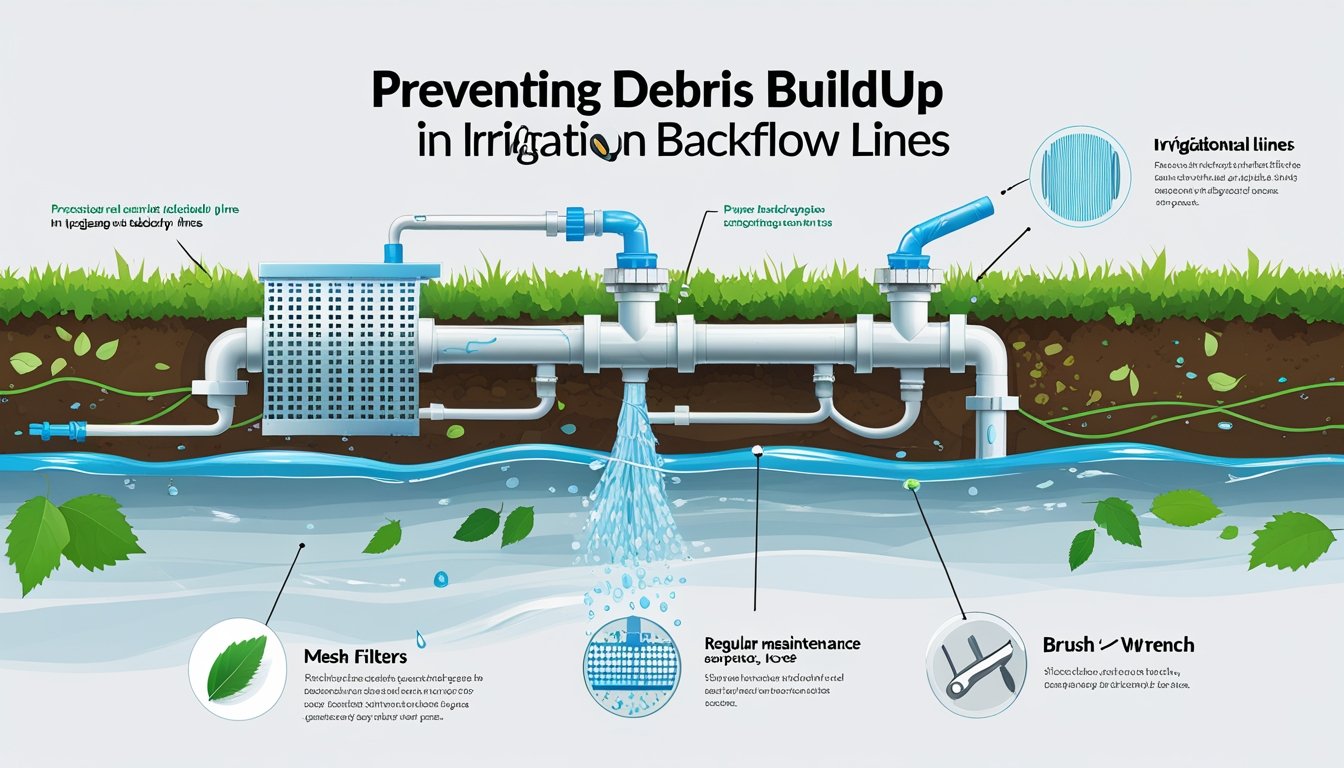A water backflow preventer valve is essential for maintaining the safety and quality of your drinking water. This device prevents contaminated water from reversing flow back into the clean water supply, protecting your home and community from potential health risks. Understanding how this valve works and its importance can save you from costly repercussions and ensure compliance with local regulations.
At Pacific Backflow, we specialize in providing reliable and responsive backflow testing and installation services throughout San Diego County. With nearly half a century of experience, we ensure that your backflow preventer functions correctly, complying with all safety and code requirements.
In a world where water quality can be compromised, knowing about backflow preventers and their role in your plumbing system is vital. By prioritizing this crucial component, you can safeguard your water supply and contribute to a healthier community.
What Is a Water Backflow Preventer Valve?
A water backflow preventer valve is a crucial component in plumbing systems designed to protect your water supply from contamination. Understanding its definition, how it works, and the types of backflow events will help you appreciate its importance in maintaining safe water usage.
Definition and Purpose
A water backflow preventer valve is a device intended to allow water to flow in one direction only. Its primary purpose is to prevent backflow, which occurs when contaminated water flows back into the clean water supply. This mechanism safeguards public health by ensuring that non-potable water, such as from irrigation systems or fire suppression systems, does not mix with municipal water. The prevention of backflow is particularly critical in areas with high contamination risks.
These devices are often installed on main water lines and require regular testing to ensure compliance with local regulations. Many homeowners and businesses rely on services like Pacific Backflow for backflow testing and maintenance, ensuring that their systems function correctly.
How a Backflow Preventer Valve Works
Backflow preventer valves typically consist of multiple check valves that open and close in response to changes in pressure. When the water flows normally, these valves allow clean water to enter your plumbing system. However, if there is a drop in water pressure or a reversal of flow, the valves close tightly, preventing contamination.
Most commonly, reduced pressure zone (RPZ) devices are used because they contain dual check valves along with a relief valve. This design provides an additional layer of protection by releasing excess pressure if needed. Regular inspections and maintenance are critical to ensure these mechanisms function correctly, and services like those from Pacific Backflow can help maintain compliance.
Types of Backflow Events
Backflow events can generally be categorized into two main types: back pressure and back siphonage.
1. Back Pressure: This occurs when the pressure in the plumbing system exceeds that of the water supply, often due to pumps or other equipment. Contaminants can flow back into the water supply system under such conditions.
2. Back Siphonage: This happens when there is a sudden drop in water pressure, such as during a fire or main break. This change can create a vacuum effect that draws contaminated water back into the supply line.
Understanding these types of backflow events can help you identify potential risks in your plumbing system and ensure that you have appropriate backflow prevention solutions in place. Regular testing and maintenance by professionals like Pacific Backflow can significantly mitigate these risks.
Types of Water Backflow Preventer Valves
Understanding the various types of water backflow preventer valves is essential for effective water system management. Each type comes with distinct features, advantages, and specific applications.
Double Check Valve Assembly (DCVA)
A Double Check Valve Assembly is designed to prevent backflow in non-health hazard applications. It features two independently acting check valves that work in unison to maintain safe water flow. When the water pressure is balanced, both valves remain closed, stopping any potential backflow.
DCVAs are particularly useful in residential and commercial settings where there is no significant risk of contamination. They are typically installed in irrigation systems and fire protection systems. Regular maintenance and testing are critical to ensure they function correctly, as any malfunction could compromise your water quality.
Pressure Vacuum Breaker (PVB)
The Pressure Vacuum Breaker is a popular type of backflow prevention device used in irrigation systems. It protects against backflow caused by back-siphonage, making it suitable for situations with potential contamination.
This device operates with a spring-loaded check valve and a vent, which opens to the atmosphere during a drop in water pressure. It is important to ensure that the PVB is installed above the highest point of the system to function effectively. Failure to do so can lead to improper operation, risking contamination.
Reduced Pressure Zone Assembly (RPZ)
The Reduced Pressure Zone Assembly is one of the most reliable backflow prevention devices, especially for health hazard situations. It includes two check valves and a pressure relief valve that discharges any contaminated water to the outside if backflow is detected.
RPZs are widely used in commercial kitchens, laboratories, and other environments where health and safety are paramount. They require regular testing and maintenance to remain compliant with local regulations, ensuring maximum protection for your potable water supply.
Atmospheric Vacuum Breaker (AVB)
The Atmospheric Vacuum Breaker is ideal for low-risk applications and is used primarily for irrigation and residential systems. It prevents backflow by creating a vacuum that stops water from flowing back into the system when water pressure drops.
AVBs are effective for preventing contamination in certain scenarios. Installation must comply with local codes, as they require appropriate positioning to function correctly. Regular inspections are necessary to ensure they remain operational, protecting your water supply from potential backflow issues.
For all your backflow prevention needs, consider the reliable service offered by Pacific Backflow, serving All of San Diego County. Whether you require testing, repairs, or installations, expert assistance is just a call away.
Key Components and Mechanisms
Understanding the critical components and mechanisms of water backflow preventers is essential for effective system management. Each part plays a specific role in preventing contamination and ensuring the safe flow of water within your plumbing system.
Check Valves
Check valves are fundamental to the operation of a backflow preventer. They ensure that water flows in one direction, closing automatically to prevent backflow. This single-direction flow is vital for keeping contaminants out of your clean water supply.
Typically, backflow preventers will feature at least two check valves arranged in a series. This setup provides an additional layer of protection, reducing the risk of backflow if one valve fails. Regular inspection and maintenance of these valves are necessary to ensure their effectiveness and prolong the lifespan of your backflow prevention system.
Test Valves and Ports
Test valves and ports are essential for maintaining compliance and functionality of your backflow preventer. These components allow technicians to easily access the system for testing purposes, ensuring that everything is functioning correctly.
A properly installed test valve lets you check the pressure in different parts of the system. By doing this, you can confirm that your backflow preventer is working effectively and in compliance with local regulations. Regular tests help identify potential issues before they become significant problems, reinforcing the integrity of your plumbing system.
Relief Valves
Relief valves are critical for maintaining appropriate pressure within the backflow prevention device. They mitigate the risk of system failure by releasing excess pressure that could compromise the device's performance.
In many cases, relief valves operate automatically, efficiently responding to pressure changes. If the pressure within the system exceeds safe levels, the relief valve opens, allowing water to escape. This mechanism is crucial for preventing damage to the backflow preventer itself, thus ensuring long-term functionality and safety.
Shutoff Valves
Shutoff valves provide an extra layer of control within your backflow prevention system. These valves allow for quick isolation of the system during maintenance or emergency situations, making them invaluable when repairs are required.
By integrating shutoff valves, you gain greater control over your plumbing system, minimizing disruptions to your water supply. For effective operation, these valves should be easily accessible and regularly tested to ensure reliability. Properly functioning shutoff valves can facilitate timely repairs, preventing costly damage and ensuring compliance with safety standards.
At Pacific Backflow, we prioritize the reliability of these components to protect the water supply throughout San Diego County. Our comprehensive services ensure that your backflow preventer remains functional and compliant, safeguarding your system's integrity.
Installation and Maintenance
Proper installation and ongoing maintenance of a water backflow preventer valve are essential to ensure reliable performance and compliance with safety standards. Understanding the requirements for installation, testing, and maintenance can help you protect the integrity of your plumbing system.
Professional Installation Requirements
Installing a backflow preventer requires attention to detail and adherence to local plumbing codes. It is crucial to assess your plumbing system's compatibility with the backflow preventer design—considering factors like water pressure and pipe size.
Key installation steps include:
- Selecting the Right Model: Choose a valve suitable for your specific application, whether residential, commercial, or industrial.
- Placement: Install the valve in a location that allows easy access for maintenance and testing. This is usually near the water source.
- Follow Local Codes: Ensure compliance with local plumbing regulations, which may dictate specific installation practices.
Engaging professionals can provide peace of mind. Companies like Pacific Backflow specialize in secure, compliant installations across San Diego County.
Backflow Testing Procedures
Annual backflow testing is mandatory to confirm that your preventer is functioning as intended. A certified technician will conduct this test to validate the device's reliability.
Testing typically involves:
- Initial Inspection: Assessing the condition of the backflow preventer and plumbing system.
- Flow Measurement: Analyzing water flow through the device to detect potential backflow scenarios.
- Documenting Results: The technician provides detailed reports to you and submits them to the relevant local authority.
Maintaining accurate records of backflow tests is essential for compliance and safety. Utilizing reliable services, such as those offered by Pacific Backflow, can streamline this process.
Maintenance and Troubleshooting
Regular maintenance is vital to sustaining the functionality of your backflow preventer. Neglect can lead to costly repairs and contamination risks. Schedule inspections at least annually but consider semi-annual checks in high-demand areas.
Common maintenance tasks include:
- Visual Inspections: Look for leaks, rust, or damage on the device.
- Clean Components: Ensure that any screens or filters within the system are free from debris.
- Immediate Repairs: Address any issues identified during inspections to prevent further complications.
In cases of malfunction, consult a professional for troubleshooting. Pacific Backflow offers comprehensive repair and replacement services, ensuring your system remains compliant and efficient.
Regulatory Compliance and Certifications
Compliance with local regulations is not optional. Understanding the certifications required can keep your plumbing system safe and operational. Different regions have unique standards regarding backflow prevention devices.
Ensure compliance by:
- Using Certified Devices: Verify that your preventer meets local codes and industry standards.
- Documenting Tests and Repairs: Maintain records of all testing and maintenance actions performed on the device.
- Stay Informed: Keep up with any changes in local regulations affecting backflow devices.
Engaging qualified professionals ensures compliance and minimizes risks. With nearly five decades in the industry, Pacific Backflow guarantees reliable service tailored to your needs.
Applications and Benefits
Backflow preventers play an essential role in maintaining the integrity of water systems across various environments. They help prevent contaminated water from entering your clean water supply, thereby protecting public health and ensuring compliance with legal regulations.
Residential Plumbing Systems
In residential settings, backflow preventers guard against cross-connections that could allow contaminated water to flow back into your home’s plumbing system. For instance, if a garden hose is submersed in a pool of chemicals, backflow can occur, posing serious health risks.
Installing a reliable backflow preventer ensures that drinking and cooking water remains safe. Regular testing and maintenance are crucial; service providers like Pacific Backflow offer annual testing to ensure your device is functioning properly. This compliance not only protects your health but also satisfies local regulations.
Commercial and Industrial Water Systems
In commercial and industrial scenarios, backflow preventers protect larger water systems from potential contamination risks. These settings often use complex plumbing systems where cross-connections can readily occur due to varying operational demands.
For businesses such as restaurants or manufacturing plants, maintaining a safe water supply is non-negotiable. Backpressure from industrial processes can push contaminated water back into the main supply line. It’s essential to install appropriate backflow preventers tailored to your specific needs. Companies like Pacific Backflow specialize in these installations and ensure your systems meet local safety codes.
Irrigation and Landscape Use
The use of backflow preventers in irrigation systems helps protect potable water supplies from contamination by fertilizers and pesticides. When irrigation systems operate, backpressure can potentially cause pollutants to reverse flow into the water supply.
By using a backflow preventer suited for landscape use, you reduce the risk of introducing harmful chemicals into the domestic water supply. Regular maintenance checks can help identify wear and tear, allowing for timely replacements or repairs. Many homeowners and landscapers rely on Pacific Backflow for dependable service in this critical area.
Implementing a backflow prevention strategy is crucial for the safety and compliance of your water systems.
Frequently Asked Questions
Finding the right information about water backflow preventer valves can enhance your understanding and ensure proper installation and maintenance. Below are common questions that address installation, maintenance, regulations, and more.
How do you install a backflow preventer on a residential water line?
To install a backflow preventer, first, locate the main water line where the device will be placed. Ensure the area is accessible and free from obstructions. Then, turn off the water supply and cut the pipe to fit the valve in place. Follow the manufacturer's directions closely for secure connections.
What maintenance is required for a sprinkler system backflow preventer?
Regular maintenance includes inspecting the device for any leaks or damage. Ensure test cocks are functioning and clean. Testing the device annually is essential to verify that it is working correctly and complies with local standards, which can often be managed by a professional service like Pacific Backflow.
What are the differences between a sewer backflow preventer and a water backflow preventer?
A sewer backflow preventer protects against wastewater flowing back into a property, while a water backflow preventer prevents potable water from contaminating the drinking supply. Each serves a distinct purpose and is essential for maintaining safe water systems.
Are there specific regulations for installing a commercial backflow preventer?
Yes, commercial backflow preventers must meet specific local and state regulations. These can vary depending on the type of business and its location. Consulting local water authority guidelines is recommended to ensure compliance and the correct installation of devices.
Where can I find a backflow preventer valve for a home irrigation system?
You can purchase a backflow preventer valve at local home improvement stores or specialty plumbing suppliers. For tailored solutions or recommendations, reaching out to a professional service like Pacific Backflow can lead you to the right choice for your home irrigation system.
How frequently should a backflow preventer be tested for proper function?
Testing should occur at least once a year to ensure the device functions correctly and complies with local regulations. In some areas, more frequent testing may be required, especially in high-risk applications. A certified technician can perform this testing efficiently.

